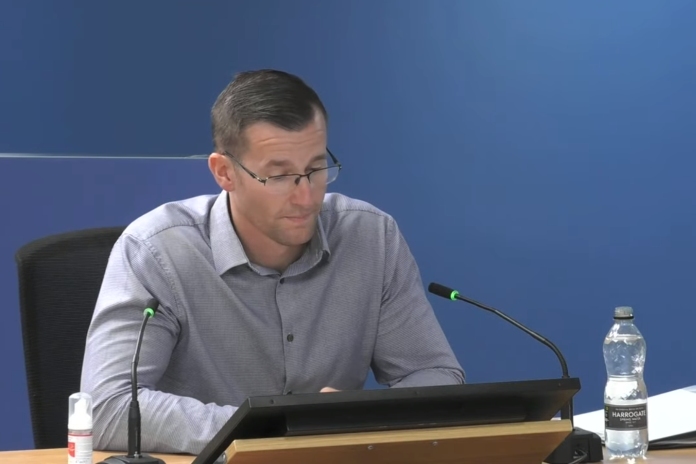
The former design manager of Harley Curtain Wall, the cladding subcontractor that work for Rydon during the refurbishment of Grenfell Tower, rejected the idea of two-hour fire stopping for the cladding as “ridiculous” because he expected it to melt and fall off the building long before that, the Grenfell Tower Inquiry has heard.
During his second day as a witness in the Grenfell Tower Inquiry hearings, Daniel Anketell-Jones was asked by counsel Kate Grange QC about a March 2015 email from Rydon contracts manager Simon Lawrence, on which Anketell-Jones was not copied in. Lawrence said: “Harley via their supply chain are questioning the rating of cladding firebreaks. Apparently by going to two hours as we discussed has a cost increase of around £12,000. Their supplier is saying it only need to be 30 minutes everywhere, as per the Regs below.”
Anketell-Jones was later copied in on the email chain by Harley director Ray Bailey, who asked him for his comments on the matter.
Anketell-Jones replied: “Just that it’s ridiculous. There is no point in ‘fire stopping’, as we all know; the ACM will be gone rather quickly in a fire! The whole point is to stop ‘unseen’ fire spreading in the cavity and moving to other parts of the building.”
Asked what he meant by the comment: “Just that it’s ridiculous”, Anketell-Jones replied: “From my training with structural design, I knew that aluminium façades were unable to resist a fire for very long at all and would just melt and fall off the building. So putting in a two-hour firebreak on that kind of façade was a waste of time.”
He added: “For the outside of the façades on any job, unless it’s specifically required, they’re not required to stay on the building in a fire. The failure mode for cladding in a fire is that it will melt and fall off.”
Asked what exactly it was about the ACM which would mean that it would be gone rather quickly in a fire, Anketell-Jones said: “That it was made from aluminium…That it would melt at a much lower temperature than steel would…That basically the aluminium rails and the brackets that supported them and the ACM would melt and fall off.”
When Grange asked Anketell-Jones if the core of the ACM panel fed into his thinking when he made this comment, he replied: “No, not at all…I was speaking generally across the whole cladding, including the ACM, the cladding and the bracketry, from knowing how aluminium performs in a fire.”
Anketell-Jones added that his main focus at this point in time was on another project. He said: “I was completely focused on another project and being sent small little tasks to do on Grenfell. I didn’t have an overall idea of what was going on.”
The Inquiry continues.
Comments
Comments are closed.










Of course a Class 0 Cladding will not have 2 hour fire resistance. It is entirely reasonable to expect a Class 0 Cladding based on Aluminium to melt and fail.
The question that you need to ask is how did a Polyethylene CORE get a Class 0 rating?